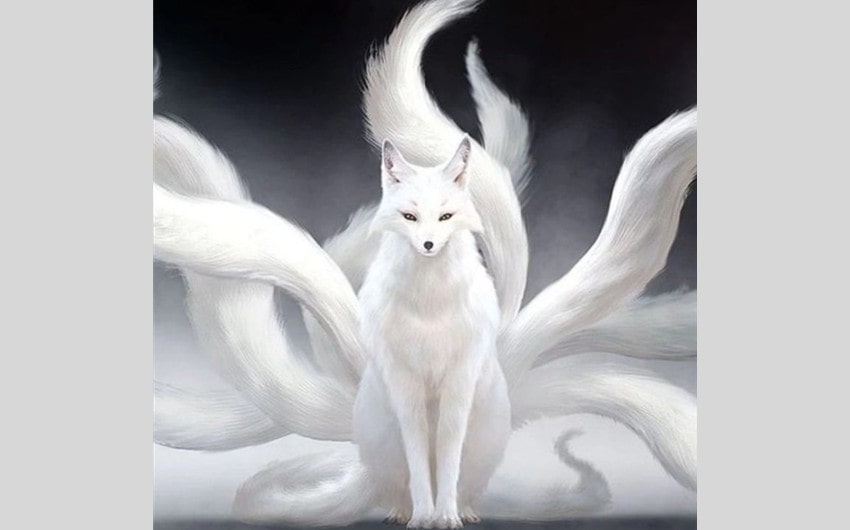Types of Kitsune: Exploring Fox Spirits in Japanese Culture
Foxes with multiple tails, magical powers, and a knack for mischief—what’s not to love? Kitsune have fascinated people for centuries, blending mystery and charm in countless Japanese legends. Some are kind, others cunning, and a few wield incredible elemental powers.
But did you know they come in all sorts of roles and forms? Understanding the different types of kitsune is like stepping into a magical world where foxes shape-shift, control the elements, and sometimes even teach life lessons. Let’s dive into their world and uncover their fascinating stories!
The Two Broad Categories of Kitsune
Kitsune in Japanese folklore are often divided into two main categories based on their moral alignment and behavior: Zenko and Yako. These categories represent the dual nature of kitsune, highlighting their capacity for both benevolence and mischief.
1. Zenko (善狐): The Benevolent Foxes
Zenko, or “good foxes,” are celestial beings associated with Inari, the Shinto deity of rice, fertility, and prosperity. These foxes are viewed as divine messengers and are often depicted as white, symbolizing purity and their holy purpose.
Zenko are revered for their loyalty to Inari, their role as protectors of shrines, and their ability to bless those who seek their help. They are considered bringers of good fortune and guardians of sacred spaces, ensuring that evil spirits do not disturb them.
Beyond their religious role, Zenko are seen as symbols of abundance and spiritual harmony, often invoked during ceremonies for blessings in agriculture, business, and personal prosperity.
2. Yako (野狐): The Mischievous Wild Foxes
Yako, meaning “field foxes,” are untamed and morally ambiguous kitsune that operate independently of any divine influence. These foxes are often portrayed as tricksters who use their magical abilities to confuse or deceive humans for their amusement.
Yako are masters of illusion and shape-shifting, often transforming into people or objects to play pranks or even manipulate situations to their advantage. While many Yako are harmless tricksters, some are more sinister, using their powers to punish or torment those who offend them.
Despite their mischievous nature, Yako are not inherently evil; their stories serve as lessons about human flaws such as arrogance, greed, or carelessness.
Kitsune by Elemental Affiliation
In addition to their moral alignment, kitsune are often categorized by their elemental affiliations. These elements grant them unique powers and traits, further diversifying their roles in mythology.
The elemental affiliations are deeply rooted in nature and the spiritual world, reflecting the interconnectedness of all things in Japanese folklore. Below are the major elemental types of kitsune and their characteristics.
1. Kaze (風狐): The Wind Kitsune
Wind kitsune are associated with speed, freedom, and invisibility. These foxes are known for their ability to summon breezes or powerful gales, allowing them to move swiftly and escape danger with ease. Their connection to the wind makes them elusive and difficult to pin down, often appearing as fleeting glimpses or whispers in the air.
In legends, wind kitsune are portrayed as messengers of change, carrying news or warnings over great distances. They are also seen as playful, sometimes stirring leaves or knocking over small objects to startle unsuspecting humans.
2. Kasai (火狐): The Fire Kitsune
Fire kitsune are among the most dramatic and powerful elemental foxes, wielding control over flames and heat. These kitsune symbolize transformation, destruction, and renewal, reflecting fire’s dual nature as both a creator and destroyer.
Legends often describe them as glowing with an inner fire, their tails or bodies appearing as if they are ablaze. Fire kitsune are sometimes seen as guardians who use their flames to protect sacred spaces or as avengers who punish those who wrong them or their loved ones. Their fiery temperament makes them both awe-inspiring and dangerous.
3. Tenko (天狐): The Celestial Kitsune
Tenko, or “celestial foxes,” represent the highest and most revered class of kitsune in Japanese folklore. The term “tenko” translates to “heavenly fox,” signifying their divine status and immense power.
These foxes are believed to be kitsune who have attained spiritual enlightenment or who have been directly blessed by the heavens. They are often considered deities in their own right, standing at the pinnacle of the kitsune hierarchy.
4. Chikyu (地狐): The Earth Kitsune
Earth kitsune are grounded and closely connected to the land, embodying stability, fertility, and growth. These foxes are guardians of nature and are often depicted as protectors of forests, mountains, and fields. Their powers allow them to manipulate the earth, whether by causing plants to grow or by creating barriers of stone and soil.
Earth kitsune are considered wise and nurturing, often aiding humans in agricultural endeavors or offering protection to travelers. Their calm and steadfast nature makes them revered as symbols of balance and harmony with the natural world.
5. Kawa/Umi (川狐/海狐): The Water Kitsune
Water kitsune are linked to rivers, lakes, and oceans, embodying adaptability and emotional depth. These foxes are said to have control over water, from gentle streams to powerful tidal waves. Their fluidity allows them to shift effortlessly between forms, making them master shape-shifters.
In many tales, water kitsune appear as mysterious and enchanting figures, often luring humans to their watery domains. However, they can also be fierce protectors of their territory, punishing those who pollute or disrespect the water. Their connection to water reflects their dual nature: calm and serene yet capable of overwhelming force.
6. Yama/Mori (山狐/森狐): The Mountain and Forest Kitsune
Mountain and forest kitsune are guardians of the wilderness, representing the untamed beauty and mystery of nature. They are often depicted as elusive and solitary, watching over remote regions where humans rarely tread. These kitsune are known for their strength and resilience, embodying the enduring power of the natural world.
In folklore, they are sometimes seen as guides or protectors for travelers lost in the wilderness. Their presence is a reminder of the sacredness of untouched nature and the importance of respecting it.
7. Sanda (雷狐): The Thunder Kitsune
Thunder kitsune wield control over storms, lightning, and thunderclaps. They are fierce and unpredictable, embodying the raw power of nature. These foxes are often associated with dramatic entrances, their presence marked by flashes of lightning or the rumble of thunder.
Thunder kitsune are considered symbols of power and energy, often appearing in stories as harbingers of great change or as avengers striking down injustice with their bolts of lightning. Their electrifying abilities make them some of the most awe-inspiring kitsune in mythology.
8. Ongaku (音狐): The Sound Kitsune
Sound kitsune use auditory magic to influence emotions, manipulate perceptions, and create illusions. They are often depicted as enchanting musicians or singers, their melodies capable of calming even the fiercest anger or instilling fear in their enemies.
These kitsune are also known to use their abilities to communicate across distances, their voices traveling on the wind to deliver messages. In some stories, sound kitsune are tricksters, using their voices to lead travelers astray or to create confusion, while in others, they bring peace and harmony through their music.
9. Jikan (時間狐): The Time Kitsune
Among the rarest of kitsune, time kitsune possess abilities related to the manipulation of time. They can slow it down, speed it up, or even create illusions of time travel. These foxes are often depicted as wise and ancient, their connection to time reflecting their immense knowledge and power.
Legends suggest that time kitsune can grant humans glimpses into the past or future, though such encounters are rare and often shrouded in mystery. Their presence symbolizes the fleeting and ever-changing nature of life.
Kitsune by Number of Tails
Image source: Pinterest
In Japanese folklore, the number of tails a kitsune possesses is a key indicator of its age, wisdom, and power. As a kitsune grows older and gains more experience, it is said to acquire additional tails, with nine tails being the ultimate form of power and enlightenment. This progression through tails is not just a measure of magical ability but also symbolizes spiritual growth and mastery.
One to Four Tails: Young and Developing Kitsune
Kitsune with one to four tails are considered young or inexperienced in the grand scale of their spiritual journey. They are still learning to harness their abilities and are often portrayed as mischievous or curious.
These kitsune are most likely to be associated with playful pranks, as they are still discovering the extent of their magical capabilities. While their powers are relatively limited compared to older kitsune, they are nonetheless formidable tricksters, capable of basic illusions, shape-shifting, and minor elemental control.
Five to Seven Tails: Mature and Wise Kitsune
Kitsune with five to seven tails are seen as mature and significantly more powerful. By this stage, they have honed their magical abilities and developed a deeper understanding of the spiritual and physical worlds. These kitsune are often more responsible and may take on roles as protectors, guides, or mediators in folklore.
Their presence is usually associated with wisdom and strength, and they are more likely to use their powers for purposes beyond simple mischief, such as aiding humans or balancing natural forces.
Eight Tails: The Enlightened Kitsune
An eight-tailed kitsune represents a being on the brink of transcendence. These kitsune are revered as almost divine entities, possessing incredible magical powers and profound wisdom. They are often associated with significant transformations or critical moments in their journey toward enlightenment.
In some legends, an eight-tailed kitsune may be mistaken for a deity due to its overwhelming presence and abilities, but it is still just shy of achieving the ultimate form.
Nine Tails (Kyuubi no Kitsune): The Ultimate Kitsune
The nine-tailed kitsune, or Kyuubi no Kitsune (九尾の狐), is the pinnacle of kitsune evolution. These foxes are ancient, wise, and extraordinarily powerful. Each of their tails is said to represent a thousand years of life, making them symbols of immortality, spiritual perfection, and immense magical strength. They are often described as glowing or radiating an aura of divine energy, highlighting their celestial nature.
Nine-tailed kitsune are capable of performing feats that defy human understanding, such as controlling time, creating vast illusions, or summoning natural disasters. In many legends, they are revered as deities or feared as forces of nature.
While most nine-tailed kitsune are depicted as benevolent and wise, there are tales of malevolent ones who use their immense power for destruction, making them both awe-inspiring and fearsome.







